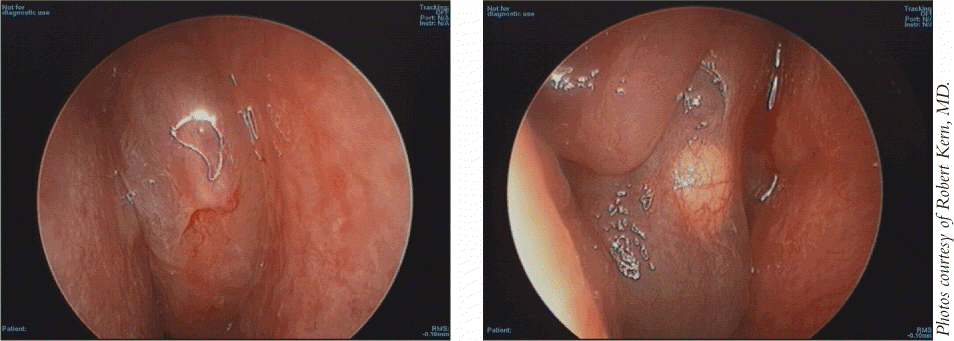A problem with Samter’s triad is that it takes a long time to develop, so earlier detection would be a major benefit. Perhaps we are missing a lot of patients if we wait for them to present with the full clinical triad, Dr. Gosepath said. It might take 10 years or more for the asthma to develop, then another couple of years for the triad to come into full picture.
Explore This Issue
October 2009Trying for earlier detection with provocation testing is more expensive and carries risk. But Dr. Gosepath said that there is progress being made with more advanced tests.
In one study, the cellular allergen stimulation test (CAST) was found to have 53% sensitivity and 89% specificity. Flow-CAST was found to have 65% sensitivity and 90% specificity. And the functional eicosanoid test (FET) has been found to have 96% sensitivity and 73% specificity.
The FET test has been used increasingly, he said. However, it is mostly in clinical trials because it is not free, and most insurances do not cover this test, at least in our country, he said. So that is certainly a problem. But it’s a nice tool to have in hand.
Treating Eicosanoid Imbalance
What is found by those tests then leads to the next hurdle. If you come up with a decision that this patient needs treatment for eicosanoid imbalance, how do you do that, and what is your maintenance dose? he said. And is this a harmful treatment, or is this something that can be done in a larger population?
Studies have been all over the map on this score. They range from recommending a maintenance dose of 650 mg twice a day down to 100 mg a day-which was a conclusion reached by a study by Dr. Gosepath’s group (Gosepath J et al. Arch Otolarygnol Head Neck Surg 2001;127:316-21).
In his study, 18 patients were evaluated after a clinical course of 24 months on the low dose therapy of 100 mg a day. At the end of the study period, 15 out of 18 were free of recurrent nasal polyps. Just one of the patients needed a revision procedure. In the 12 patients who had asthma, seven of them showed improvement. And 11 of the patients had an improved sense of smell.
And in patients where even that dosage has been problematic, smaller doses have sometimes been effective, he said. We have already in some of these patients reduced to 80 or 50 mg with the side effects getting better, but without taking them off the aspirin, Dr. Gosepath said.

Leave a Reply